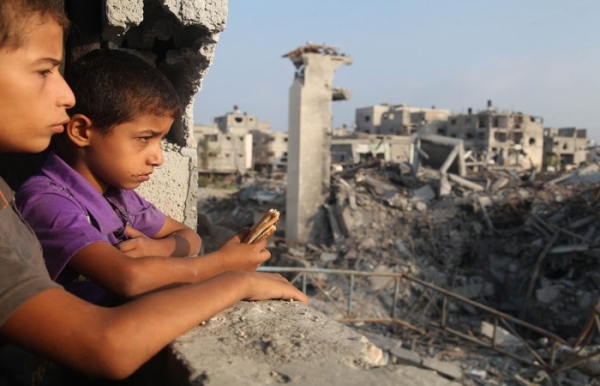In this regard, international pressure to protect the rights of children has been increasing; a revolutionary commitment to uphold the initiative was the adoption of the Convention on the Rights of the Child, 28 years ago. The Convention was intended because it was considered indispensable to provide greater protection for children involved in armed conflicts, during which the conditions that should guarantee their safety are temporarily absent.
As a result, the international community was required to take action to suppress the impact of the conflict on minors, and to prevent their involvement in war.Although there have been considerable improvements in terms of international law, there are still numerous state and non-state armed groups that compromise and exploit children in armed combat. Consequently, the United Nations Security Council recently adopted Resolution 2427, during a meeting held on July 9th.
Outlined in the report of the resolution, the emphasis was on how children continue to be systematically affected by conflicts and have thueir rights violated. In particular, the report stresses that conflict prevention remains a primary responsibility of States and of the actions taken in the framework of conflict prevention by the United Nations. Therefore, Member States and the United Nations are invited by international community to integrate the protection of minors in all relevant activities on conflict prevention and post-conflict situations with the primary objective of supporting peace.
The report also highlights the increasingly common tendency for militant groups to use public places, such as schools and hospitals as breeding grounds for the armed forces and/or for recruitment. This means that these places can be targeted in attacks.
Moreover, armed conflict will inevitably result in the violation of fundamental rights, in particular that of children who will no longer have access to education and medical care, thus becoming increasingly vulnerable.
In this report it is reiterated that the monitoring and reporting mechanism are fundamental tools for reporting violations of children's rights in case of conflicts and, for these reasons, it is essential that these mechanisms continue to be implemented by all states and their respective national governments considered the main responsible for the protection of minors, conflict prevention and post-conflict situations.
Furthermore, the importance of activism by the Working Group on Children and Armed Conflicts and of the working group to implement the safeguarding of children affected by armed conflicts is reaffirmed, as well as by increasing the shared commitment with the interested Member States in reporting and monitoring these violations.
In this resolution, the agenda on children and armed conflict is determined as an integral part of the general issue of conflict prevention and peacekeeping. There is added emphasis, on the importance of implementing the 2030 Agenda for sustainable development by recognizing the imperative attention in the fight against poverty, deprivation, and inequality as a means of preventing and protecting children from the violations of armed conflicts.
In conclusion, all stakeholders, including Member States, the UN, the supranational and local financial institutions of civil society are urged to work together to defend, protect, rehabilitate and reintegrate children affected by armed conflict, implementing accountability mechanisms including the reinforcement of investigative and procedural skills, and the assurance that those responsible for such violations and abuses against children are held accountable and brought to justice.
To know more:
https://www.huffingtonpost.com/entry/5a12f424e4b023121e0e9505?guccounter=1
https://www.ohchr.org/EN/ProfessionalInterest/Pages/CRC.aspx
https://www.unicef.it/Allegati/Convenzione_diritti_infanzia_1.pdf
By Valeria Uncino
Editing by Christina De Paris




